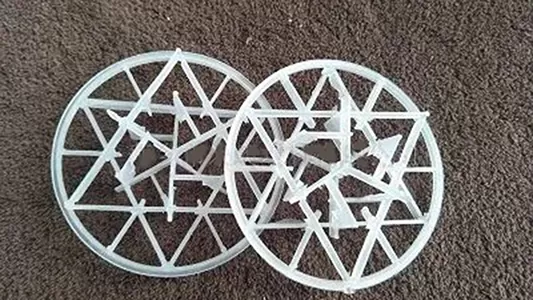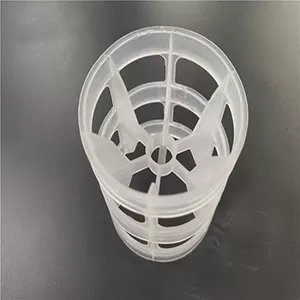The replacement cycle of
plastic packing is an important issue in industrial maintenance, which is affected by various factors. This article will discuss the factors influencing the replacement cycle of plastic packing and the common replacement time.
The service environment of plastic packing is a key factor affecting its replacement cycle. In mild environments with low temperatures, normal pressure, and non - corrosive media, plastic packing can usually be used for 5 to 8 years. For example, in some water treatment processes where the fluid is relatively clean and the temperature is stable, the plastic packing is less likely to be damaged and can maintain good performance for a longer time.

However, in harsh environments, the replacement cycle will be significantly shortened. In high - temperature environments, especially when the temperature is close to or exceeds the heat - resistant limit of the plastic material, the plastic packing is prone to aging, softening, or deformation, and may need to be replaced every 2 to 3 years. In corrosive environments with strong acids, alkalis, or organic solvents, the chemical properties of the plastic packing may be damaged, resulting in a shorter service life, sometimes even needing replacement within 1 to 2 years.
The operating conditions also play an important role. If the equipment operates under high pressure or strong fluid flow for a long time, the plastic packing will be subject to greater impact and friction, which accelerates wear and tear. In such cases, the replacement cycle may be 3 to 5 years. On the contrary, if the equipment operates stably with low pressure and gentle fluid flow, the plastic packing can last longer.

The quality of the plastic packing itself is another factor. High - quality plastic packing made of excellent materials and with fine processing has better durability and can be used for a longer time. For example, plastic packing made of polytetrafluoroethylene (PTFE) with good chemical resistance and heat resistance has a longer service life than that made of ordinary polypropylene (PP) in harsh environments. Inferior plastic packing may have defects in material or structure, leading to early damage and requiring more frequent replacement.
Regular maintenance and cleaning also affect the replacement cycle. Timely cleaning of the plastic packing to remove dirt, scale, or other deposits can prevent blockage and reduce corrosion, thereby extending its service life. If maintenance is neglected, the packing may be damaged prematurely, and the replacement cycle will be shortened accordingly.
In addition, the type of industrial process also influences the replacement time. In processes with high requirements for separation efficiency, such as distillation or absorption processes in the chemical industry, even if the plastic packing is not severely damaged, it may need to be replaced every 3 to 5 years to ensure the process efficiency. In some low - requirement processes, the replacement cycle can be appropriately extended.
In summary, the replacement cycle of plastic packing varies, usually ranging from 1 to 8 years, depending on factors such as the service environment, operating conditions, packing quality, maintenance, and process requirements. Regular inspection of the plastic packing's condition, such as checking for damage, deformation, or reduced performance, is necessary to determine the appropriate replacement time.



